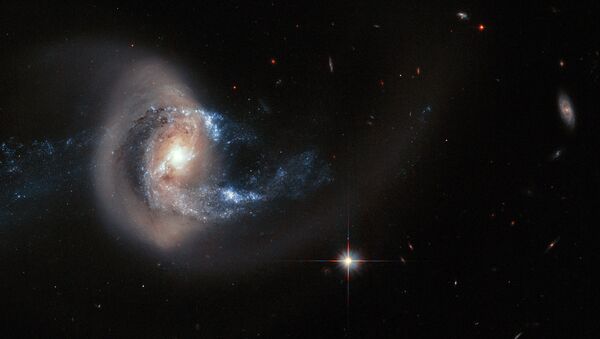The tiny galaxy dates from just 700 million years after the big bang, which is the blink of an eye in the timescales of the universe. According to the scientists' paper, reported by Nature, the problem is that this small galaxy is much dustier than it should for its size.
"It's surprising because although dust is essential for the formation of planets and other solid material, the cosmos started out with no dust at all. In the aftermath of the big bang, the universe consisted only of hydrogen and helium gas (along with dark matter, but that's invisible)," the University of Arizona expert on galaxy formation Daniel Marrone said.
According to Marrone, the dusty galaxy is not the only surprise astronomers have discovered recently.
"Last week we learned of an incredibly massive black hole in the early universe. Now we have this average galaxy with significant amounts of dust. We've had this cartoon picture of the early universe, but it's clear that we really don't know what's going on."
The paper's lead author, Darach Watson, is also puzzled by the appearance of this dusty galaxy.
"In bigger galaxies with more massive, short-lived stars, dust can pile up quickly since giant stars explode violently as supernovae after just a few million years. In smaller galaxies, most of the dust should emerge from the more gentle deaths of smaller stars that live for billions of years. So maybe this dust comes from supernovae after all," he said.
To find out the truth astronomers need to uncover more galaxies like this one, which is an extremely difficult task to achieve.

